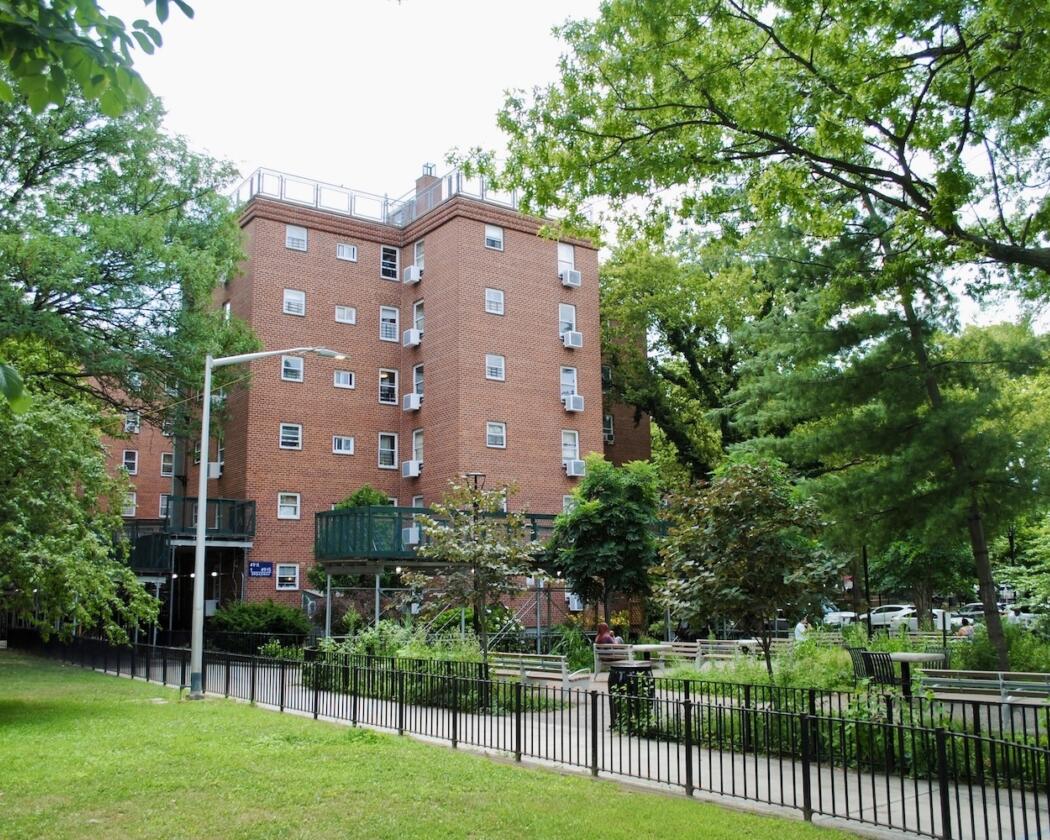
NYCHA makes a market: Here’s how
To develop a heat pump that didn’t yet exist, New York’s public agencies put up millions in investment, then challenged the market to develop a solution — a strategy that’s seen success before
24 apartments at NYCHA’s Woodside Houses in Queens received electric heat pumps for heating and cooling as part of a pilot project to test the feasibility of the equipment. Photo: Hannah Berman
For NYCHA, which manages 2,400 buildings as the largest residential landlord in New York City, major innovations in the infrastructure of residential buildings are a necessary — but at times daunting — reality. When things break, like an old boiler, it can be tempting to repair and replace existing systems; but in the long term, new, cleaner technologies that are appearing on the market are often a wiser investment.
As NYCHA advisor Tom Sahagian put it, “If a building covered by Local Law 97 replaces a boiler now, they will either lock in fossil fuel emissions for decades to come, or be saddled with an expensive stranded asset if the building eventually installs heat pumps.”
That’s why, in 2022, the citywide housing authority chose to look ahead with a $70 million investment in the Clean Heat for All Challenge. The pilot project led to the development of new all-electric window-unit heat pumps that were then swapped in for central steam heating systems in 24 apartments at Woodside Houses.
To fund the effort to create these new heat pumps, New York Power Authority (NYPA) has provided upfront financial support, and New York State Energy Research and Development Authority (NYSERDA) is providing $13 million for the demonstration phase, with funds approved through the Regional Greenhouse Gas Initiative Operating Plan.
This challenge-driven innovation model is reminiscent of another successful product challenge NYCHA initiated 30 years ago to replace its refrigerators. The 1990s refrigerator competition, into which NYPA invested $38 million of funding, resulted in a refrigerator that used about 30% less energy than the Department of Energy’s standard at the time. NYPA had committed to ordering and installing 20,000 new refrigerators for NYCHA in each of the four years following the successful launch of the product.
The winner of the refrigerator contest in the 90’s ended up cutting energy consumption by half, compared to existing models NYCHA was using at the time. The bulk orders allowed for a cost reduction in the products; prices for fridges continued to decrease as the company partnered with other public housing authorities throughout the region. Thus, the competition allowed the agency to help shape a product not just for itself, but for the broader market — which is part of NYCHA’s goal with the new window-unit heat pumps.
Each Midea heat pump unit bought in bulk through NYCHA cost roughly $1,700. With three units per apartment, that’s around $5,100 to $6,780 per home, or nearly $7 million for an entire development. Still, the rates NYCHA secured are less than Midea’s commercial pricing for their heat pumps, which is about $2,800 to $3,000 per unit. And over the long run, the energy savings are substantial — around 85 percent savings for heating, compared to the existing gas-fired boiler plant that creates steam heat, and about 50 percent utility cost savings.
NYCHA’s scale gives it leverage most property owners don’t have. The agency’s Clean Heat For All Challenge called on manufacturers to develop brand new window-unit heat pump technology. In return, the agency promised volume — contracts for 30,000 units over three years.
Decarbonization still costs more upfront, but utility savings and maintenance reductions, along with investments like NYCHA’s, could make the systems cost-competitive over time, and these pumps in particular don’t require a building-wide upgrade to electrical panels, which can be quite costly. If the units prove successful in NYCHA buildings, they’re likely to become a solution for aging multifamily buildings across the city and beyond.
